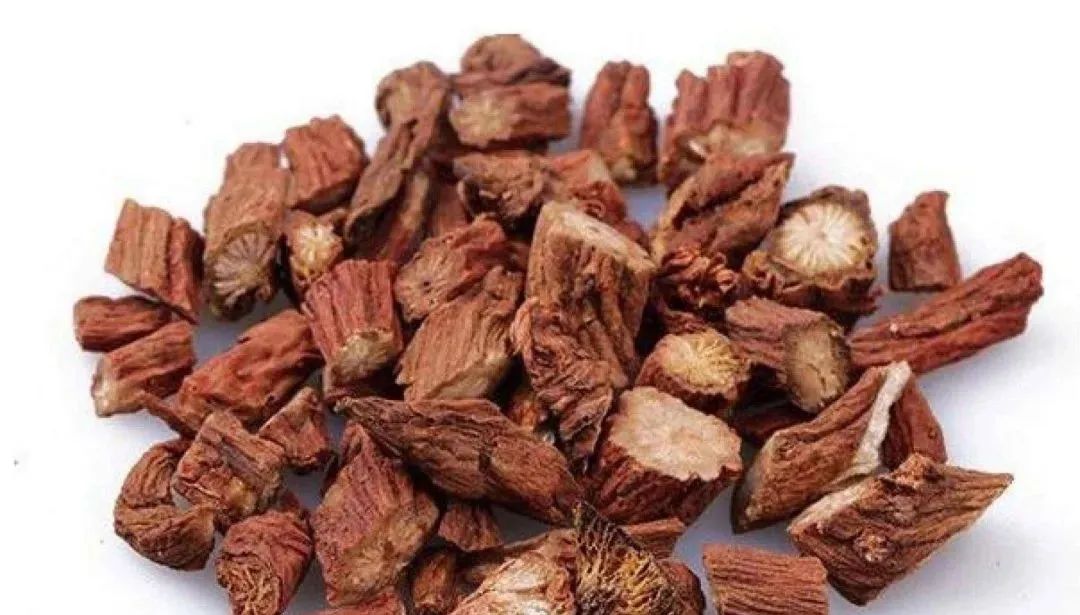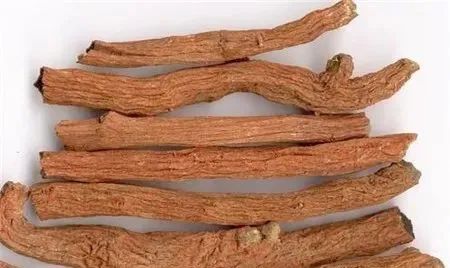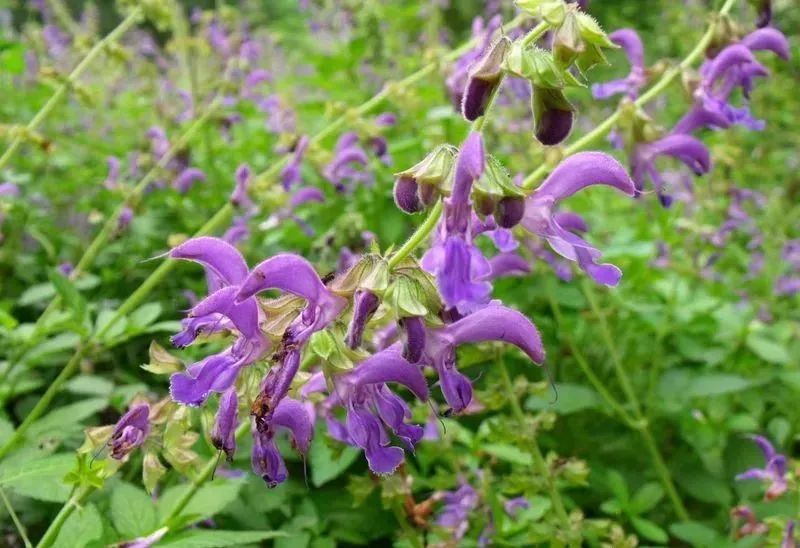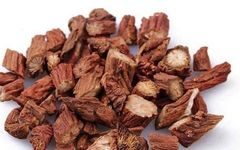Click on "Shennong's Hundred Herbs Formula" above...
Disease inquiry, health guidance, classic health preservation, Traditional Chinese Medicine and herbs, no need to seek help when ill.PinyinDān Shēn

Alias Yi Shen, Mu Yang Ru (from “Wupu Bencao”), Zhu Ma (Tao Hongjing), Shan Shen (from “Rihua Zibencao”), Zi Dan Shen (from “Modern Practical Chinese Medicine”), Hong Gen (from “Chinese Medicinal Plants”), Zi Dang Shen (from “Nanjing Folk Herbal Medicine”), Shan Hong Luo Bo (from “Zhejiang Chinese Medicine Manual”), Huo Xue Gen, Kao Shan Hong, Hong Shen (from “Jiangsu Plant Medicine”), Shao Jiu Hu Gen, Ye Su Zi Gen, Shan Su Zi Gen (from “Northeast Medicinal Plants”), Da Hong Pao (from “Hebei Medicinal Materials”), Mi Guantou, Xue Shen Gen, Duo Duo Hua Gen (from “Shandong Chinese Medicine”), Feng Tang Guo (from “Shaanxi Chinese Medicine”).
Source From the root of the Lamiaceae plant Dan Shen. It can be harvested from early November to early March of the following year, with early November being the best time. The roots are dug out, cleaned of soil and roots, and dried.
Habitat Distribution Grows in sunny mountain areas. Distributed in Liaoning, Hebei, Henan, Shandong, Anhui, Jiangsu, Zhejiang, Jiangxi, Hubei, Sichuan, Guizhou, Shanxi, Shaanxi, Gansu, Guangxi, and other regions. Mainly produced in Anhui, Shanxi, Hebei, Sichuan, Jiangsu, etc. Additionally, it is also found in Hubei, Gansu, Liaoning, Shaanxi, Shandong, Zhejiang, Henan, Jiangxi, and other areas.

Morphology Dan Shen, also known as: Qie Chan Cao (from “Bencao”), Ben Ma Cao (from “Four Sounds Bencao”), Chang Shu Wei Cao.
Perennial herb, 30-80 cm tall, the whole plant densely covered with yellow-white soft hairs and glandular hairs. The root is slender and cylindrical, with a reddish-brown outer skin. The stem is erect, square, with shallow grooves on the surface. Odd-pinnate compound leaves, opposite, with petioles; leaflets 3-5, rarely 7, with the terminal leaflet being the largest and the longest petiole; lateral leaflets may have short petioles or none; leaflets are ovate, broadly lanceolate, 2-7.5 cm long, 0.8-5 cm wide, with acute or gradually pointed tips, and bases that are obliquely rounded, broadly wedge-shaped, or nearly heart-shaped, with rounded serrations on the edges, dark green above, sparsely covered with white soft hairs, gray-green below, densely covered with white long soft hairs, especially on the veins. The raceme is terminal or axillary, 10-20 cm long; small flowers are whorled, with 3-10 flowers per whorl, bracts lanceolate, about 4 mm long; the calyx is purple, bell-shaped, 1-1.3 cm long, with a bilabiate apex, the upper lip is broadly triangular with an acute tip, the lower lip is triangular with two acute teeth; the calyx throat is densely covered with white long hairs; the corolla is blue-purple, bilabiate, about 2.5 cm long, with the upper lip slightly curved and sickle-shaped, the lower lip shorter and rounded, with three lobes, the central lobe being longer and larger, with two shallow lobes at the tip; there are 2 developed stamens, the filaments are cylindrical, the anther is elongated and horizontally expanded, T-shaped, and protrudes beyond the corolla, with 2 degenerated stamens that have anthers reduced to petal-like structures; the ovary is superior, deeply 4-lobed, the style protrudes beyond the corolla, and the stigma is bifid, purple. There are 4 small achenes, oval, black, about 3 mm long. Flowering period is from May to August. Fruiting period is from August to September.

Characteristics The dried root often has remnants of the stem base at the top, with 1 to several slender branches growing from the rhizome. The root is slightly elongated cylindrical, slightly curved, sometimes branched, with many fine fibrous roots, about 10-25 cm long, 0.8-1.5 cm in diameter, lateral roots about 5-8 cm long, 2-5 mm in diameter, with a surface that is reddish-brown to brick-red, rough, with irregular longitudinal wrinkles or corky texture, often peeling in scale-like patterns. The texture is hard and brittle, easily broken, with an uneven fracture surface, with a keratinous or fibrous appearance, the bark is darker, purple-black or brick-red, and the wood part has vascular bundles that are gray-yellow or yellow-white, arranged radially. The aroma is weak, with a sweet and slightly bitter taste. The best quality is characterized by a thick root, purple-black inside, and white spots resembling chrysanthemums.
Chemical Components Contains Danshenone I, II A, II B, Isodanshenone I, II A, Hidden Danshenone, Isohidden Danshenone, Methyl Danshenone, Hydroxy Danshenone, etc.
Preparation Remove impurities, discard the rhizome, wash, drain, soak, slice, and dry. Stir-fried Danshen: Place Danshen slices in a pan and stir-fry over low heat until slightly charred, then remove and cool.
“Pinhui Essentials”: “Remove the pith, chop finely for use.”
Meridian Entry Enters the Heart and Liver meridians.
① “Gangmu”: “Blood medicine for the Hand Shaoyin and Jueyin.”
② “Bencao Jing Shu”: “Enters the Hand and Foot Shaoyin, Foot Jueyin meridians.”
③ “Bencao Zheng”: “Medicine for the blood of the Heart, Spleen, Liver, and Kidney.”
Properties and Flavor Bitter, slightly warm.
① “Bencao”: “Bitter, slightly cold, non-toxic.”
② “Wupu Bencao”: “Qibo: Salty.”
③ Li Dangzhi’s “Yao Lu”: “Greatly cold.”
④ “Bencao Jing Shu”: “Bitter, neutral, slightly warm.”
Precautions Use with caution in those without blood stasis.
① “Bencao Jing Ji Zhuang”: “Avoid salty water. Counteracts with Li Lu.”
② “Bencao Jing Shu”: “Do not use during pregnancy without reason.”
③ “Bencao Bei Yao”: “Avoid vinegar.”
④ “Bencao Feng Yuan”: “Avoid if there is loose stool.”
Functions and Indications Activates blood circulation and removes stasis, calms the mind, expels pus, and relieves pain. Treats angina pectoris, irregular menstruation, dysmenorrhea, amenorrhea, excessive uterine bleeding, abdominal masses, stasis abdominal pain, joint pain, insomnia due to fright, and carbuncles.
① “Bencao”: “Mainly for evil qi in the heart and abdomen, intestinal sounds like running water, cold and heat accumulation; breaks stasis and removes masses, relieves fullness, and benefits qi.”
② “Wupu Bencao”: “Treats abdominal pain.”
③ “Bielu”: “Nourishes blood, removes stubborn qi in the heart and abdomen, strengthens the waist and spine, alleviates leg numbness; expels wind evil and retains heat, long-term use benefits the person.”
④ Tao Hongjing: “Soak in wine and drink, treats wind bi.”
⑤ “Yao Xing Lun”: “Treats weak legs, painful bi, mainly for middle evil; treats abdominal pain, gas sounds like roaring water.”
⑥ “Rihua Zibencao”: “Nourishes the spirit and calms the will, unblocks the collaterals. Treats cold and heat labor, joint pain, limb paralysis; expels pus and relieves pain; generates flesh and promotes growth; breaks old blood and supplements new blood; calms pregnancy and prevents miscarriage; stops excessive bleeding and regulates women’s irregular menstruation, blood evil causing heart vexation; treats carbuncles, scabies, goiter, and swelling toxins; headaches, red eyes, heat mania, and agitation.”
⑦ “Diannan Bencao”: “Nourishes the heart and calms the will. Treats forgetfulness and fright, insomnia.”
⑧ “Gangmu”: “Activates blood, unblocks the heart pericardium. Treats hernia pain.”
⑨ “Yunnan Chinese Herbal Selection”: “Activates blood and disperses stasis, calms and relieves pain. Treats irregular menstruation, dysmenorrhea, rheumatic pain, uterine bleeding, vomiting blood, mastitis, and abscesses.”
Dosage and Administration Internal use: decoction, 4.5-9 grams; or in pills or powders. External use: decocted into a paste for application, or decocted for fumigation and washing.
Formulas ① For treating women’s irregular menstruation, whether early or late, excessive or insufficient, prenatal instability, and postpartum blood not flowing: Dan Shen (remove pith) in any amount, ground into powder. Take 6 grams, mix with wine, take before meals for irregular menstruation and cold labor at any time. (“Women’s Good Formula” Dan Shen Powder)
② For treating irregular menstruation: Zi Dan Shen, 500 grams, cut into thin slices, sun-dried until crisp, ground into fine powder, and made into pills with good wine. Take 9 grams, with warm water in the morning. (“Collected Proven Effective Formulas” Regulating Menstruation Pills)
③ For treating scanty menstrual blood and postpartum stasis abdominal pain, amenorrhea abdominal pain: Dan Shen, Yi Mu Cao, and Xiang Fu, each 9 grams. Decoction for oral administration.
④ For treating abdominal masses: Dan Shen, San Leng, and E Zhu, each 9 grams, and Zao Jiao Ci, 3 grams. Decoction for oral administration.
⑤ For treating acute and chronic hepatitis with pain in the flanks: Yin Chen, 15 grams, Yu Jin, Dan Shen, and Ban Lan Gen, each 9 grams. Decoction for oral administration. (The following formulas are from “Shaanxi, Gansu, Ningxia, Qinghai Chinese Herbal Selection”)
⑥ For treating miscarriage with continuous bleeding: Dan Shen, 750 grams, finely chopped, boiled with 5 liters of clear wine to obtain 3 liters, take 1 liter warm, three times a day. (“Qianjin Fang”)
⑦ For treating various abdominal pains that are half deficient and half excess: Dan Shen, 30 grams, Bai Zhi, and Sha Ren, each 4.5 grams. Decoction for oral administration. (“Yixue Jinzhen” Dan Shen Drink)
⑧ For treating pain in the waist and hips radiating to the legs: Du Zhong, 240 grams, Dan Shen, 150 grams, Du Huo, Dang Gui, Xiong Dan, and Gan Di Huang, each 120 grams. Cut the six herbs, place in a silk bag, soak in 40 liters of clear wine for five nights, take 300 ml, twice a day. Avoid Wu Yi. (Zhang Wenzhong)
⑨ For treating neurasthenia: Dan Shen, 15 grams, Wu Wei Zi, 30 grams. Decoction for oral administration. (“Shaanxi, Gansu, Ningxia, Qinghai Chinese Herbal Selection”)
⑩ For treating children with sweating and wind stroke, body rigidity, and high fever: Dan Shen, 15 grams, mouse droppings, 21 pieces (lightly fried). Grind the above herbs into fine powder. Each dose, mix with water to adjust for half a gram, adjust according to the child’s size. (“Sheng Hui Fang” Dan Shen Powder)
⑪ For treating women’s breast swelling and pain: Dan Shen, and Shao Yao, each 60 grams, Bai Zhi, 30 grams. Combine the three herbs, soak in bitter wine overnight, mix with pig fat, and simmer on low heat until a paste forms for application. (“Liu Juanzis Ghost Prescription” Dan Shen Paste)
⑫ For treating pain or swelling in the yin area: Dan Shen, 30 grams, Bing Lang, 30 grams, Qing Ju Pi, 15 grams (soaked in soup to remove the white pith, roasted). Grind the above herbs into fine powder. Each dose, mix with warm wine to take 6 grams. (“Sheng Hui Fang” Dan Shen Powder)
⑬ For treating cold hernia, pain in the lower abdomen and yin area, spontaneous sweating: Dan Shen, 15 grams, chopped, ground into fine powder. Each dose, mix with hot wine to take 6 grams. (“Sheng Hui Fang”)
⑭ For treating wind-heat with skin eruptions, severe itching leading to scabies: Dan Shen, 120 grams (chopped), Ku Shen, 120 grams (sliced), She Chuang Zi, 90 grams (raw). Combine the herbs with 3.5 liters of water, decoct until 1.5 liters remain, strain, and wash while hot. (“Sheng Hui Fang” Dan Shen Decoction)
⑮ For treating burns from hot oil, relieving pain and promoting flesh growth: Dan Shen, 240 grams, chopped, with a little water, take 1 kg of sheep fat, decoct three times to apply to the wound. (“Zhou Hou Fang”)
Clinical Applications ① Treatment of chronic hepatitis
Take 10 ml of Danshen injection (equivalent to 20 grams of raw herb), intravenously once a day; also use liver function recovery liquid (made from dog liver) 2 ml, intramuscularly twice a day. If there is a tendency to bleed, add 2 ml of Niuxi (Earth Rhubarb) or Zizhu grass injection, intramuscularly twice a day; if it is early chronic hepatitis with cirrhosis, add 2 ml of placental tissue liquid, intramuscularly twice a day. Each treatment lasts for 30 days. In treating 9 cases of chronic hepatitis, 11 cases of chronic hepatitis, the results showed recent cures (main symptoms and signs disappeared, liver function returned to normal) in 15 cases, significant effects (symptoms and signs disappeared, liver function significantly improved or returned to normal, but the spleen significantly shrank) in 3 cases, and ineffective in 2 cases. The best improvement in symptoms was nausea, followed by fatigue, loss of appetite, abdominal distension, and then liver area pain. Among 17 cases of liver enlargement, all returned to normal after treatment; among 4 cases of spleen enlargement, 3 returned to normal after treatment. Liver function recovery was better in cases with abnormal transaminases and other indicators; those with abnormalities in all four indicators had poorer recovery. During the treatment, there was no prolongation of coagulation time or prothrombin time, nor was there a tendency to bleed. No adverse reactions or side effects were observed. It is analyzed that Danshen can improve liver physiological function, promote liver and spleen shrinkage and softening, possibly due to its ability to dilate peripheral blood vessels, reduce portal vein pressure, improve intrahepatic blood circulation, and increase the nutrition and oxygen supply to liver cells. It is also believed that Danshen can activate blood circulation and remove stasis, which may have a certain effect on eliminating the proliferation of fibrous connective tissue in the liver.
Danshen applied to acute infectious hepatitis showed no significant efficacy; it was believed that while there was some effect on liver shrinkage, the improvement in liver function was not obvious, and symptoms such as loss of appetite, nausea, dizziness, and liver-spleen pain seemed to worsen in some cases. There are also reports that Danshen combined with Yin Chen, in treating acute jaundice-type infectious hepatitis, showed an effective rate of 98.5% in 200 cases observed. Dosage: 60 grams of Danshen, 30 grams of Yin Chen, boiled twice with water, mixed the two decoctions, added 15 grams of sugar, and concentrated to 200 ml, with adults taking 60 ml and children 25 ml, both taken twice daily. Children averaged 20 days of medication, while adults took about 33 days.
② Treatment of thromboangiitis obliterans
Dry white flower Danshen, cut into small pieces, and soak in 55-degree white wine for 15 days to prepare a 5-10% white flower Danshen wine. Each dose is 20-30 ml, taken three times a day; if the condition is severe, with intense pain, and the patient drinks alcohol, each dose can be 50 ml, taken 2-3 times a day, or take the medicinal wine in one go until intoxicated. In a trial of 34 cases, 8 cases were treated solely with medicinal wine, while the remaining 26 cases used medicinal wine as the main treatment, combined with other Chinese herbs at different stages. The results showed clinical cures in 15 cases, significant improvement in 9 cases, progress in 3 cases, and no effect in 7 cases. Most patients experienced pain relief after taking the medicine, with improved symptoms in the affected limbs, a feeling of warmth in the limbs, or a significant sensation of heat radiating to the distal limbs, and it was also effective for migratory superficial venous inflammation. Most patients experienced no adverse reactions, with a few experiencing skin itching; long-term use may cause stomach pain and reduced appetite, requiring a pause in medication for observation. It is contraindicated in patients with hepatitis, ulcer disease, hypertension, and nephritis.
③ Treatment of late-stage schistosomiasis with liver and spleen enlargement
Collect Danshen roots, dry them, slice, and decoct twice with water, filter, and combine the filtrate to prepare a 30-50% decoction, adding syrup as needed. A total of 41 cases were treated in three groups (A, B, C) with dosages of 0.3-0.5 g, 0.6-0.9 g, and 1.0-1.6 g per kg body weight, respectively, for 42, 30, and 30 days as a treatment course. The control group had 8 cases, taking 1.5-2 g of yeast tablets daily. The results showed that Danshen had considerable effects on the size and nature of the liver and spleen. Among 27 patients with liver enlargement, 12 showed shrinkage, 15 became softer, and 12 showed no change; among 41 patients with spleen enlargement, 20 shrank, 22 became softer, and 19 showed no change. The C group with a higher dosage and the A group with a longer treatment course showed more significant efficacy, generally showing effects after 10-15 days of treatment. However, no cases returned to normal size for the liver and spleen. This herb seems to be more effective in patients with shorter disease duration and milder conditions. If combined with a reasonable diet and rest, the efficacy can be improved. Danshen has very low toxicity; doses have been increased to 45 grams daily for 83 days without adverse effects. However, one case with a relatively small dose (30 grams daily) experienced unexplained upper gastrointestinal bleeding on the 9th day; thus, it is advised that patients with tendencies for vomiting, blood in stool, hemoptysis, hematuria, or purpura should avoid using Danshen.
④ Treatment of coronary heart disease
Use Danshen extract to make tablets (each tablet contains 0.2 grams of extract) for oral administration, 2 tablets each time, 3 times a day (equivalent to 30 grams of raw herb daily). Each treatment course lasts from two weeks to one month. In an observation of 323 cases, the duration of medication varied from 1 to 9 months. The total effective rate for angina pectoris was 82.3%, with a significant effect rate of 20.3%; the efficacy was better in moderate and mild cases; those taking the medicine for 2 months had better efficacy than those for 1 month. The total effective rate for electrocardiograms was 53.2%, with a significant effect rate of 14.8%; among them, the efficacy for chronic coronary artery ischemic lesions was better than for myocardial infarction lesions, and cases with positive or suspicious positive results in the second-level treadmill exercise test had higher efficacy than those with general electrocardiogram ischemic lesions, with moderate and mild patients showing better efficacy than severe cases. The evaluation of efficacy after stopping medication requires further observation. Most cases showed no significant side effects, with only a few cases showing some impact on peripheral blood counts, gastrointestinal tract, and liver function (SGPT).
Additionally, a compound injection of Danshen and Xiangxiang was used to treat over 300 cases of coronary heart disease with angina pectoris, resulting in an effective rate of over 82% for symptoms and about 50% for electrocardiograms. Dosage: Depending on the severity of the condition, three injection methods were used: (1) Intravenous drip – 4 ml of injection added to 500 ml of low molecular dextran or 5% glucose for intravenous drip. Treatment course of 1-2 weeks. (2) Intramuscular injection – 1-2 ml daily; treatment course of 2-4 weeks, some lasting up to 4 months. (3) Intravenous push – 1 ml of injection added to 20 ml of 50% glucose for injection. All three methods were effective, each with its characteristics. Intravenous push had a quicker effect on angina pectoris but a shorter duration; intravenous drip had a more significant effect than intramuscular injection, with a longer duration, making it a common method in hospital applications; intramuscular injection, while slower in effect, is convenient for use.
Moreover, Danshen injection was used to treat multiple gastric and colon polyps in one case, achieving good results. Since the patient could not undergo surgical treatment, Danshen injection was tried. Initially, 10 ml was given, mixed with 40 ml of 50% glucose for intravenous push; after several treatments with no reactions, the dosage was changed to 20 ml mixed with 40 ml of 50% glucose for intravenous push. Both were given once daily, with the first treatment course lasting 35 times. During the treatment, the patient’s spirit and appetite gradually improved, purulent blood stools decreased, physical strength gradually increased, heart murmurs significantly improved, and edema subsided.
Note Additionally, there are several other plants whose roots are also used as Danshen in some regions:
① Gansu Danshen, with conical roots. Leaves are mostly basal or grow on the lower part of the stem, with ten triangular ovate or ovate-lanceolate leaves, with heart-shaped or spear-shaped bases. Used in Gansu, Ningxia, Qinghai, Yunnan, and Tibet.
② Brown-haired Danshen, with the underside of the leaves densely covered with brown soft hairs. Used in Gansu, Ningxia, Qinghai, and Yunnan.
③ Dian Danshen, with fleshy, thick, spindle-shaped roots, clustered together. Leaves are basal, with single leaves or pinnate compound leaves, single leaf blades are ovate or long oval, with slightly heart-shaped bases, both sides are wrinkled and slightly hairy, with rounded teeth on the edges; pinnate compound leaves have 3-5 leaflets. The umbellate inflorescence has 4-6 flowers, arranged in a loose raceme at the top of the stem; the corolla is blue-purple. Used in Yunnan.
Excerpt from “Dictionary of Chinese Medicinal Herbs”
Note: This article is for reference only; specific treatment and medication should follow medical advice! This public account is only for academic exchange.
To learn more about Traditional Chinese Medicine, Chinese medicinal materials, herbal formulas, and folk remedies, ▼ Click the card below ▼ to inquire!
For example: back pain, gynecology, andrology, kidney tonification, lumbar disc herniation, back pain, leg pain, knee pain, cervical spondylosis, liver disease, stomach disease, constipation, frequent urination, diarrhea, lower abdominal protrusion, dysmenorrhea, mammary gland hyperplasia, postpartum care, acne, white hair, hair loss, skin diseases, age spots, aging, yin deficiency, colds, cough, fever, insomnia, stones, pharyngitis, sore throat, headaches, toothaches, snoring, oral ulcers, bad breath, rhinitis, tinnitus, eye diseases, thyroid issues, dandruff, athlete's foot, hemorrhoids, cold hands and feet, rheumatism, night sweats, cerebral hemorrhage, hypertension, diabetes, asthma, heart disease, cardiovascular diseases, fatty liver, gout, senile dementia, varicose veins, qi tonification, blood tonification, calcium supplementation, weakness, obesity, pediatric diseases, slim legs, slim waist, dampness, spleen strengthening, hiccups, body odor, cramps, smoking cessation, meridians, Chinese patent medicines, foot baths... and more.
Thank you for sharing and clicking "See" for continuous good luck!
